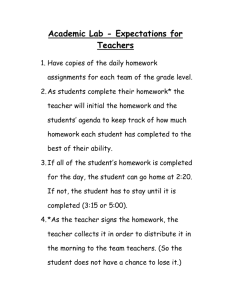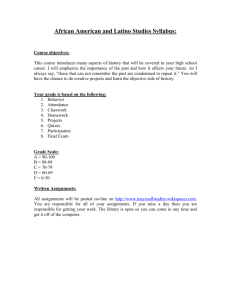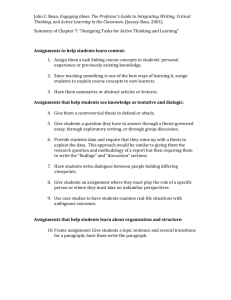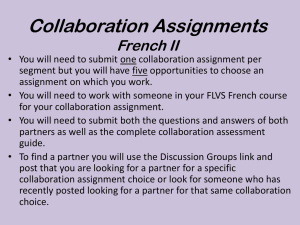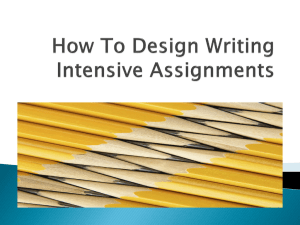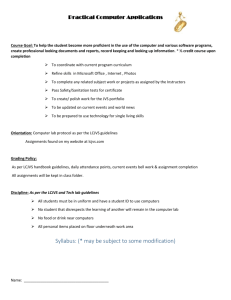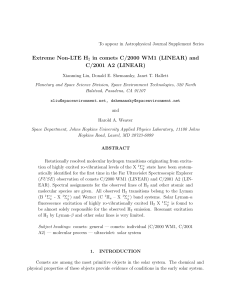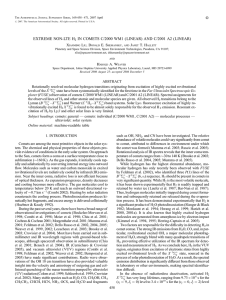Ten Tips for Effective Writing Assignments
advertisement
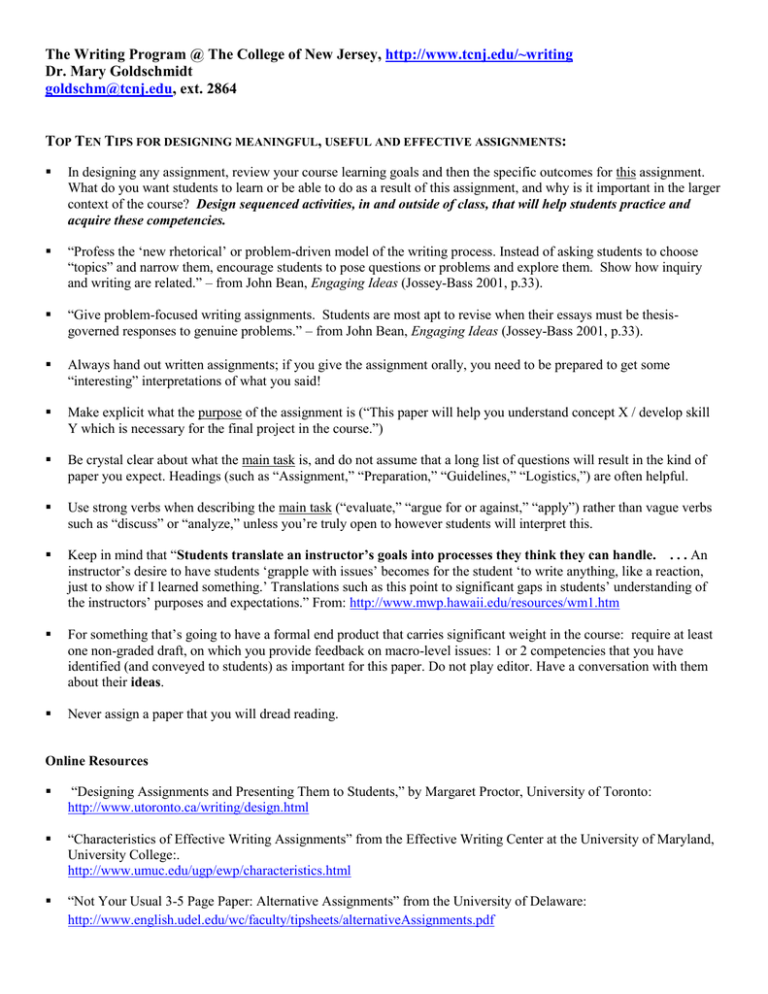
The Writing Program @ The College of New Jersey, http://www.tcnj.edu/~writing Dr. Mary Goldschmidt goldschm@tcnj.edu, ext. 2864 TOP TEN TIPS FOR DESIGNING MEANINGFUL, USEFUL AND EFFECTIVE ASSIGNMENTS: In designing any assignment, review your course learning goals and then the specific outcomes for this assignment. What do you want students to learn or be able to do as a result of this assignment, and why is it important in the larger context of the course? Design sequenced activities, in and outside of class, that will help students practice and acquire these competencies. “Profess the ‘new rhetorical’ or problem-driven model of the writing process. Instead of asking students to choose “topics” and narrow them, encourage students to pose questions or problems and explore them. Show how inquiry and writing are related.” – from John Bean, Engaging Ideas (Jossey-Bass 2001, p.33). “Give problem-focused writing assignments. Students are most apt to revise when their essays must be thesisgoverned responses to genuine problems.” – from John Bean, Engaging Ideas (Jossey-Bass 2001, p.33). Always hand out written assignments; if you give the assignment orally, you need to be prepared to get some “interesting” interpretations of what you said! Make explicit what the purpose of the assignment is (“This paper will help you understand concept X / develop skill Y which is necessary for the final project in the course.”) Be crystal clear about what the main task is, and do not assume that a long list of questions will result in the kind of paper you expect. Headings (such as “Assignment,” “Preparation,” “Guidelines,” “Logistics,”) are often helpful. Use strong verbs when describing the main task (“evaluate,” “argue for or against,” “apply”) rather than vague verbs such as “discuss” or “analyze,” unless you’re truly open to however students will interpret this. Keep in mind that “Students translate an instructor’s goals into processes they think they can handle. . . . An instructor’s desire to have students ‘grapple with issues’ becomes for the student ‘to write anything, like a reaction, just to show if I learned something.’ Translations such as this point to significant gaps in students’ understanding of the instructors’ purposes and expectations.” From: http://www.mwp.hawaii.edu/resources/wm1.htm For something that’s going to have a formal end product that carries significant weight in the course: require at least one non-graded draft, on which you provide feedback on macro-level issues: 1 or 2 competencies that you have identified (and conveyed to students) as important for this paper. Do not play editor. Have a conversation with them about their ideas. Never assign a paper that you will dread reading. Online Resources “Designing Assignments and Presenting Them to Students,” by Margaret Proctor, University of Toronto: http://www.utoronto.ca/writing/design.html “Characteristics of Effective Writing Assignments” from the Effective Writing Center at the University of Maryland, University College:. http://www.umuc.edu/ugp/ewp/characteristics.html “Not Your Usual 3-5 Page Paper: Alternative Assignments” from the University of Delaware: http://www.english.udel.edu/wc/faculty/tipsheets/alternativeAssignments.pdf Features that increase the likelihood that students will invest in their writing: a) b) c) d) When students are truly engaged with and interested in the topic/problem. When students have an adequate understanding of the topic, conceptually or experientially. When students are not being asked to do something that they’re not yet conceptually ready to do. When there’s something at stake (beyond just the grade) in the writing. What you can do: Design engaging writing problems. For example, which of the following is more interesting to you? Compare and contrast these four philosophers’ views on X. Due to space limitations, only one of these four philosophers is going to be included in a new edition of a frequently used textbook on X. Who should it be and why? What issues and perspectives get excluded as a result of this choice? What leads to confusion in paper assignments? Here are examples from a study at the University of Hawaii at Manoa on the differences between what faculty intended and how students mis-read assignments. http://www.mwp.hawaii.edu/resources/wm1.htm: What Instructors Expect What Students Understand "For the short paper on a video, I wanted students to make connections among the archeologist’s questions, the methods used to get answers, and principles from their reading." "This assignment was like writing a high-school movie review. I wanted to give my own personal understanding about the video, so I was going to write a narrative." "In the journals I wanted students to really wield their own opinions and grapple with issues, to really think about course material." "When I first heard the assignment, I thought I was supposed to write anything, like a reaction, just to show if I learned something."
